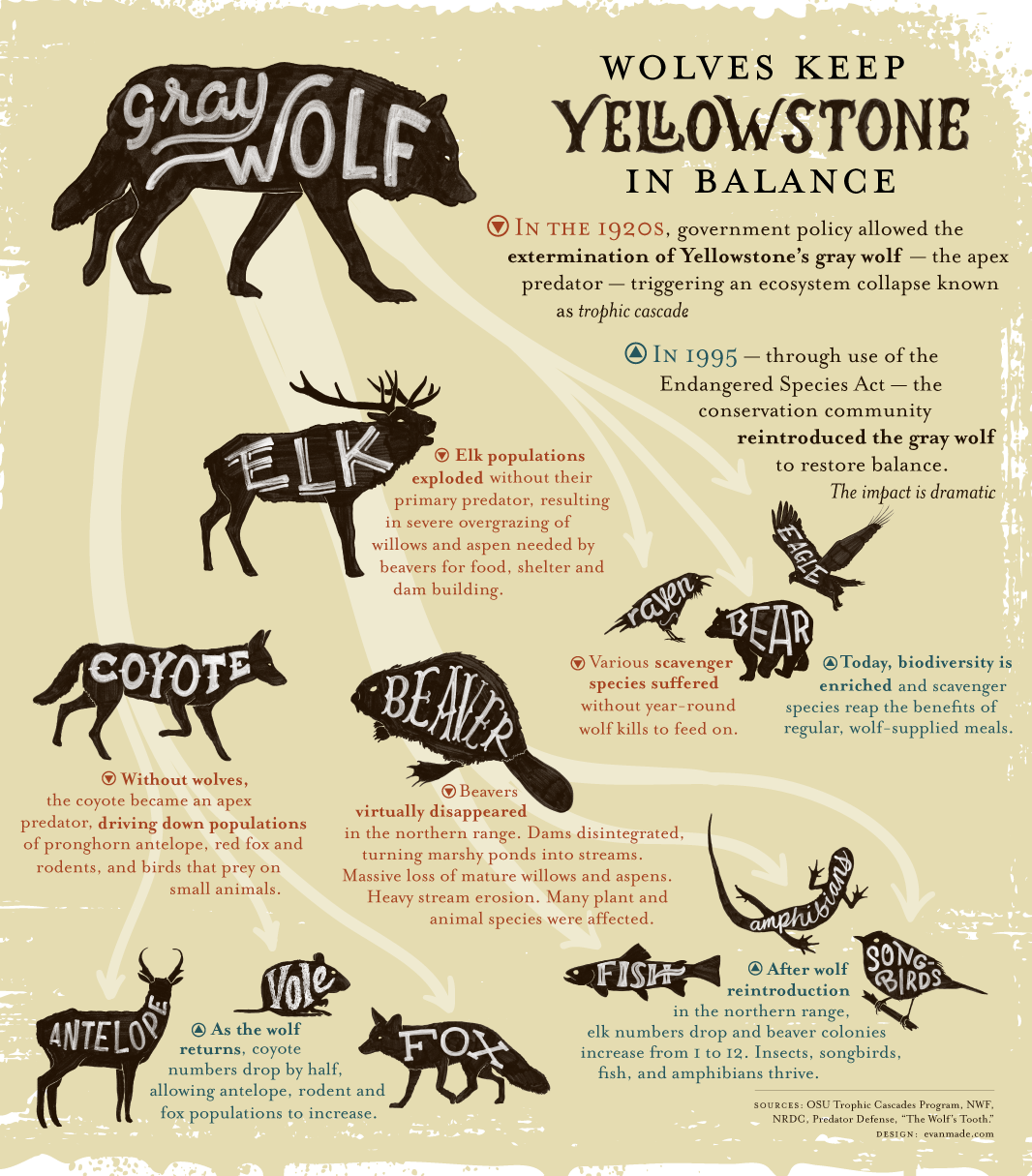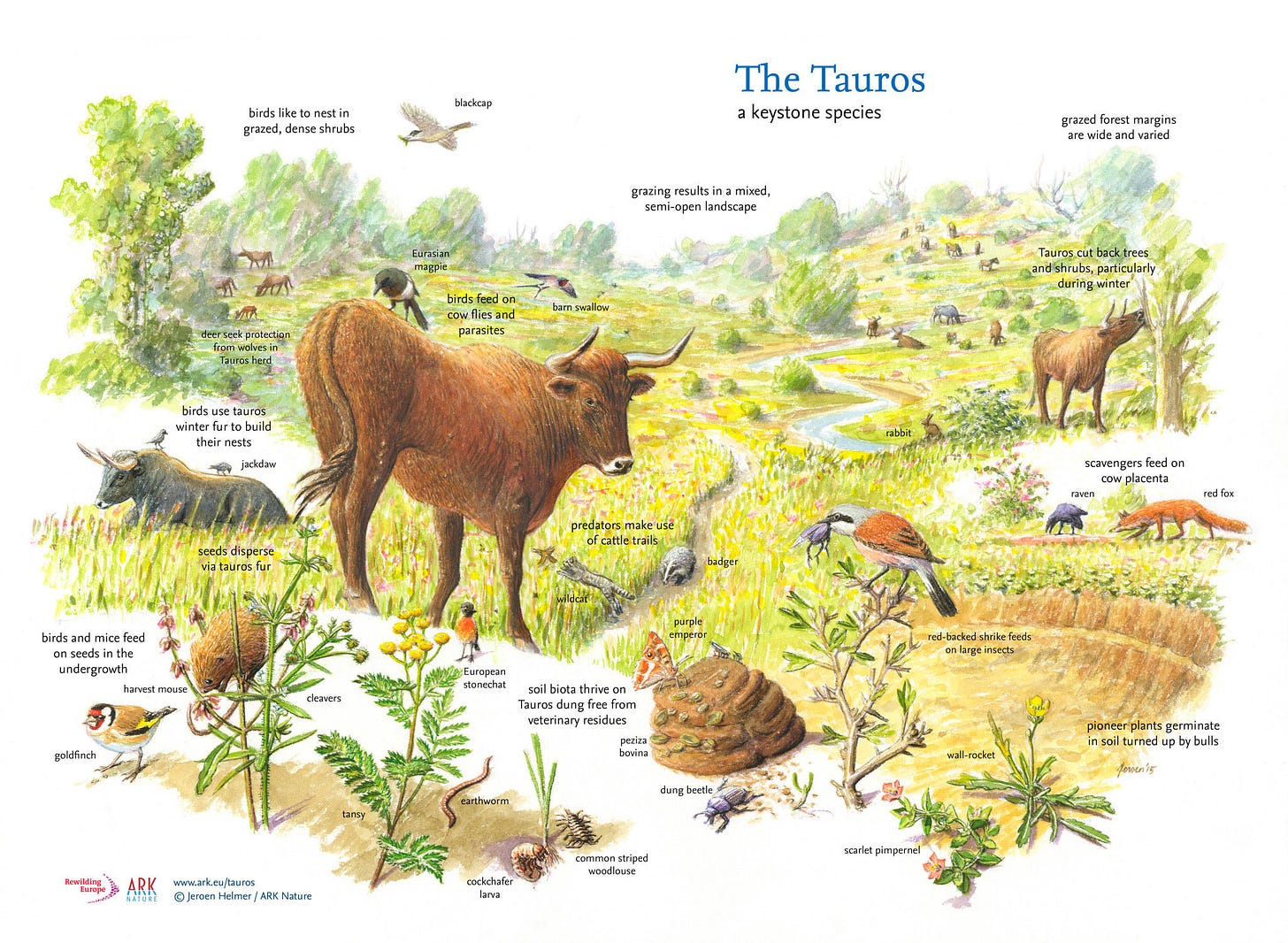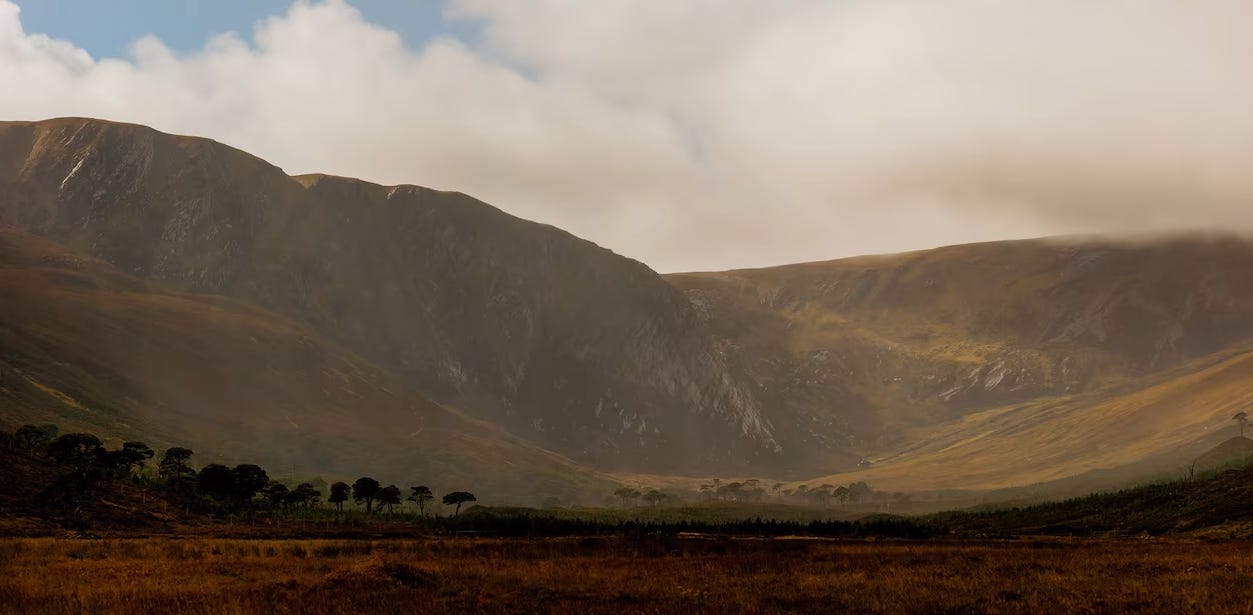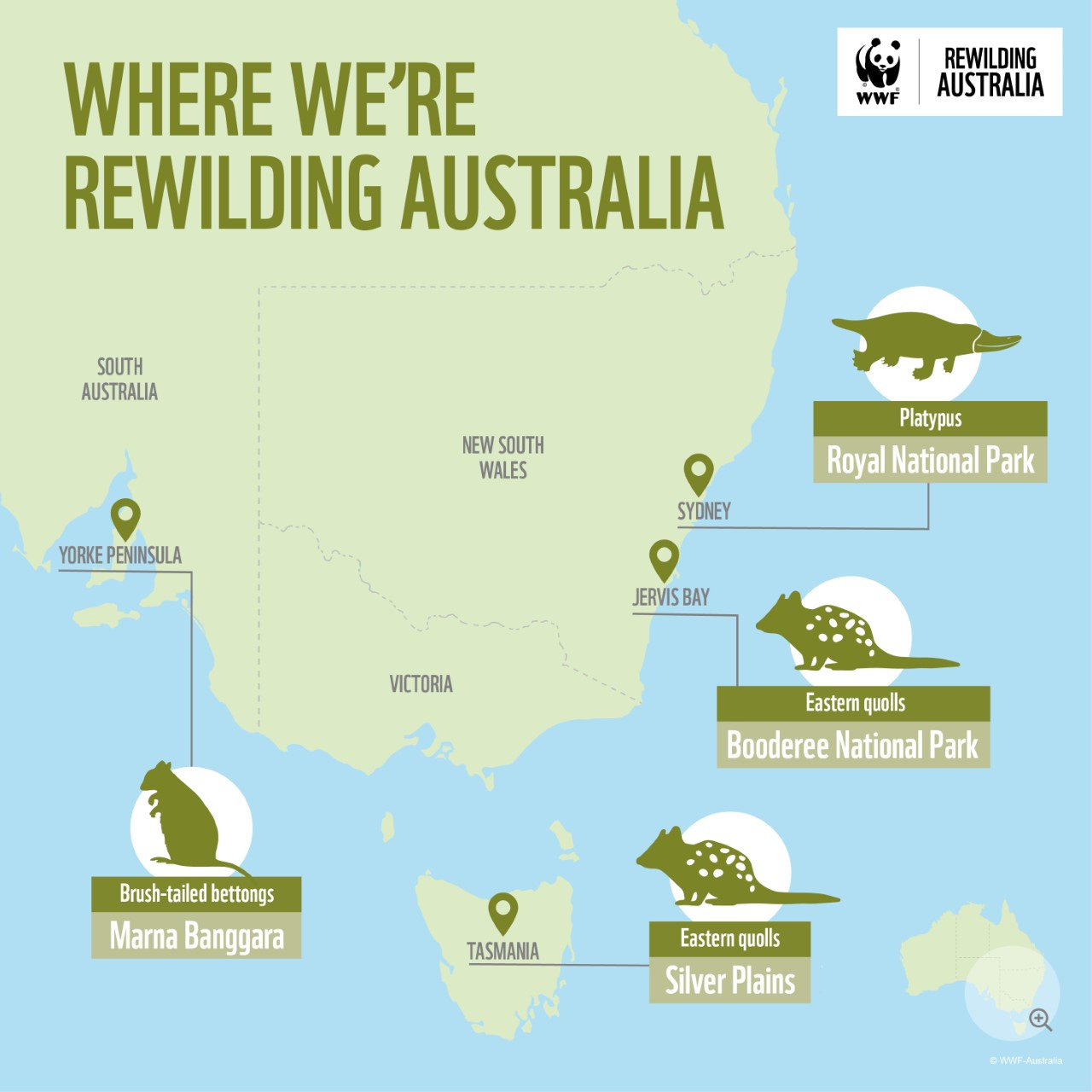Rewilding is the name for returning land to a more natural condition from a currently depleted state - an ecological desert. This movement focuses on land humans have adapted, used, or accidentally destroyed. It is gaining a following and implementation in many parts of the world. Is it working?
Rewilding Basics
Rewilding was investigated and first implemented in the 1990s. It is the action of trying to reestablish a natural balance in the environment by restoring native plants, providing wildlife the freedom to expand their ranges, and reintroducing keystone species into the region. Much of the early buzz was around animal corridors that allowed disconnected habitats to be joined. They were often planned in areas where animal vehicular deaths were high, like freeways.
After successfully expanding the range of animals with these simple corridors, conservationists looked to see what other solutions might be implemented to support natural environments.
Focused Conservation vs. Rewilding
Before the 1990s, most conservation efforts focused on habitat loss or individual species threats. For example, look at the efforts around three bird species in the United States:
California Condors, Bald Eagles, and Prairie Grouse.
Condors were under threat from hunting. Not only were they hunted once, but they feed on dead animals. These animals were often killed with lead bullets. Condors would eat scrapes of kills, accidentally ingesting lead bullet fragments. Banning lead bullets in the range of Condors let scientists reintroduce them.
Bald Eagles were nearly wiped out due to DDT. DDT, a pesticide, was used in fields, and the runoff entered the waterways. DDT would then build in in fish which ate insects. Concentrated DDT was not always deadly to fish but was deadly to the birds that ate the contaminated fish, like Bald Eagles. The effect on the eagles was that their eggshells were too thin for the egg to develop. Banning DDT allowed the Bald Eagle population to rebound. The fact that the Bald Eagle is our national bird focused attention on DDT's problems.
The threat to Prairie Grouse (aka Greater Prairie Chicken) is habitat loss. Environmentalists began the work to identify the problem and set aside more land for the birds. In the process they learned that the bird's habitat must be safe, as well as the habitat of the underlying species food source.
Rewilding
Rewilding is a refocused method of species survival, as we have learned more about how ecosystems work. It turns out most ecosystems are highly interdependent. A small change can make a significant impact in destroying or rebuilding nature. Here are three great examples.
Wolves Reintroduced into Yellowstone National Park (top-level carnivore)
Releasing wolves back into Yellowstone National Park was a risky strategy, but it ended up having astounding results and a cascade effect. Here is what happened. The biodiversity of the Yellowstone region has been depleted, and a study showed that wolf reintroduction might help.
The deer population had exploded without a significant predator. Their voracious growth and grazing had left much of the park with open but compacted ground, beneficial to the deer but little else.
Introducing wolves to this area led to the wolves hunting deer. They thinned the herds of unhealthy and older deer, reducing overpopulation.
The deer were driven out of open spaces where they were most vulnerable.
These open spaces recovered after seasons, allowing the growth of meadows and low-growing plants. The spaces now allowed more bugs to flourish, which led to a rebirth of birds who feast on these bugs back into the region.
The birds and insects pollinated trees and plants that had died back.
The growth in small birds leads to increased predator populations like hawks and eagles.
The reduced deer stock allowed space in the forests for Elk to return.
Wolves drove out the western coyotes, which led to an increase in small prey like rabbits, squirrels, chipmunks, badgers, and critically beavers.
Because the meadows were now more stable, erosion of streams and riverbanks was significantly reduced. The beavers now built natural damns that helped with erosion and increased the population of fish and the stability of rivers.
All from the introduction of wolves.
A fantastic video of the process can be found here:
Reintroduction of Aurochs in Europe (keystone species)
Aurochs are the precursors of cows. They were essentially wild cows, and all were killed in Europe by the nineteenth century. The benefits of an active Auroch population are, in many ways, the opposite of wolf reintroduction in Yellowstone.
The European landscape is the reflection of man’s impact. Farms and grazing pens reduce the biodiversity of the ecosystem. Where man has abandoned these practices, forests or chaparral have taken back the land but in a less diverse manner. The reintroduction of Aurochs (also known as Tauros in Spain) has had massive benefits. As a keystone species, they affect the landscape, allowing other animals and species to live there. As you can see from the image below (from “Rewilding Europe”), some of the species that have returned are mice, Magpies, Goldfinch, Red-Backed Shrikes, badgers, wildcats, foxes, and ravens.
Select the image to expand and detail the results.
Because Aurochs are extinct, a program had to be created to recreate a close Aurochs relative that could live in the wild. This required detailed human intervention to breed an Auroch 2.0 from cross-breeding existing stocks of domesticated cows.
Removal of Invasive Rats and Feral Cats on Campbell Island/Motu Ihupuku (2001)
You can read more here, but this is the capsule version.
New Zealand has one of the most biodiverse bird habitats in the world. This is largely due to the original islands having no ground predators for the birds for hundreds of thousands of years. Then came western sailors with cattle and sheep – and with them, rats, dogs, and cats.
New Zealand has eradicated rats or rats and cats in many very small islands, bringing back bird and small mammal populations.
In 2001, the nation started on its largest project, Campbell Island. It is 11,300 ha or 43.6 sq miles and had one of the densest concentrations of Norwegian Rats in the world – over 200,000. Rats have a purpose (what else would eat all the dropped Cheetos in the NYC subway?), but wiping out small birds on an isolated island is not one. This was the largest islands and the first island that had a small human population. It was considered the most challenging project so far.
The eradication was completed in 2006, and birds and small mammals repopulated the island. The NZ government has now eradicated invasive species on 10 or so small islands in the south and east. More are on the way.
Rewilding Scotland
The Scottish Highlands are a wild and windswept place. It is also pretty devoid of animal life. This is because the Scottish Highlands used to be covered in forests and streams, perfect for animals of all sizes. But clearing land for timber, farms, and pastures changed the landscape hundreds of years ago.
So Scotland is working to “rewild” the nation. To start, plant trees and then introduce native wildlife slowly. So far, Eurasian beavers, Red Kites, Golden Eagles, and wolves are being reintroduced. The rewilding has increased established species like Osprey, Pine Martins, and Black Grouse.
Economic Impact
Let me begin by saying rewilding is very much a “first-world problem.” Countries struggling to raise their population out of poverty or build up the middle class do not have the bandwidth or funds to invest in rewilding. There are a few critical habitats that wealthy nations and NGOs are willing to subsidize, but not many.
There are not a lot of actual economic benefits that come with rewilding. There are some tourist benefits, but since rewilding is often done to counteract human intervention, tourism must be tightly regulated.
Is It a Fad?
I do not think it is a fad that will fade away. First, people with means find satisfaction in rewilded areas. In England, rewilded areas have paths and trails that go through these rehabilitated areas and give emotional, not economic, pleasure.
The second reason is that rewilding will grow in importance over time. Climate change threatens habitats worldwide, and our experience in rewilding areas will give us information on how to help animals survive. For example, typically, animals cannot migrate into new biomes until plants and trees establish themselves. When climate change is slow and natural, there is time for adaptation. But humans have accelerated climate change past the limits of natural flora expansion. But by stepping and planting supporting trees, plants, and waterways in new areas, we can provide a path towards animal migration much quicker.









